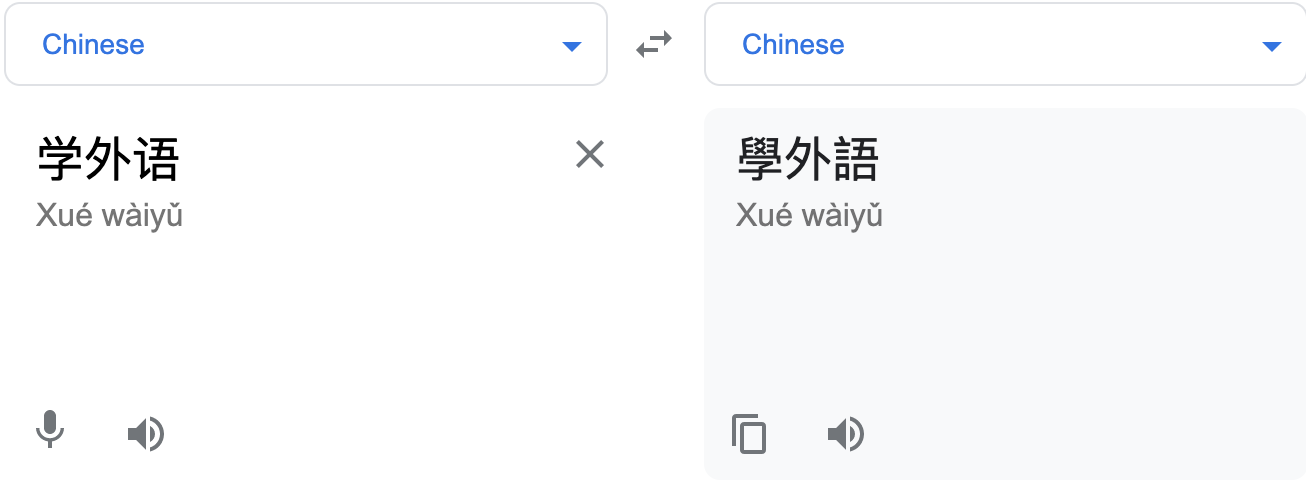Back/返回
Chinese is spoken by roughly 1.2 billion native speakers, making it one of the most widely spoken languages in the world. "Chinese" actually refers to a family of languages, its a number of dialect groups that are united by a common writing system; of which the most widely spoken are "Mandarin" and "Cantonese".
Mandarin is spoken by 960 million native speakers. Mainly in the north of China, but is now used all over mainland China and Taiwan as the official language of government media and education, and it's one of the four official languages of Singapore as well. Cantonese on the other hand is spoken by 50 to 60 million native speakers in Hong Kong, Macau. Guangzhou and some adjacent areas as well as in Chinese diaspora communities around the world.
Pronunciations
Mandarin and Cantonese are not mutually intelligible, meaning someone who only speaks Mandarin will generally not be able to understand Cantonese and vice versa. This is the reason why Mandarin and Cantonese are said to be two different languages rather than different dialects. While they are both tonal languages, meaning that one word has many meanings depending on the pronunciation and intonation, Mandarin has only four tones per sound, it consists of a high flat, rising, falling rising, falling, and the neutral tone. On the other hand, Cantonese has 6 basic tones, some people count three additional tones for a total of nine. These six basic tones are named dark flat, dark rising, dark departing, light flat, light rising, and light departing. The additional three tones are historical tones that were used for syllables ending in p, t or k.
The Characters
The characters used for Mandarin and Cantonese share the same roots in ancient China, but Mandarin uses simplified characters, which were set as the standard by the Chinese government in 1950s, while Cantonese still uses the traditional characters. As the names imply, traditional characters are more "complex", being built on many more character strokes than the simplified characters. Those who read in traditional characters will be able to figure out simplified characters, but those who read simplified will have a difficult time understanding traditional characters. Language learning community designed to break down language barriers - ditsay.com

Expressions and Idioms
Both languages use different idioms and expressions, too. Meaning that even if someone from Hong Kong is able to read a piece of simplified Chinese writing, they may not be able to understand what is actually being conveyed by the writer if idioms or colloquialisms are used (and more so vice versa).
One great Cantonese expression to sum up all of the above used in reference to Mandarin and Cantonese speakers trying to understand each other is, "the chicken talking to the duck". Basically, while outsiders may think they understand each other, they don't really.